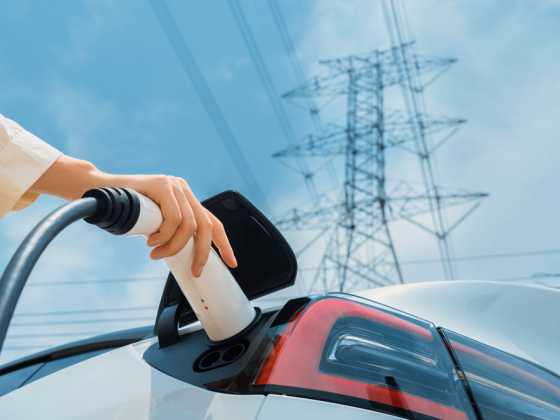The shift to low carbon vehicles
John Lewis, chief executive at the BVRLA, discusses the rental and leasing opportunities for ultra-low carbon vehicles
 Anyone looking for evidence that the government is taking electric and ultra low carbon vehicles seriously should put ‘OLEV’ into a search engine.
Anyone looking for evidence that the government is taking electric and ultra low carbon vehicles seriously should put ‘OLEV’ into a search engine.
A cross-departmental team set up in 2009, the Office for Low Emission Vehicles (OLEV) has been given £450m to support the development, manufacture and use of next generation ultra-low carbon vehicles.
Inspired by the success of its car scrappage scheme, the government has decided that cash incentives are a very good way of influencing motorists’ vehicle purchases.
More than half of OLEV’s fund, £260m, has been earmarked to help subsidise the development of a strong, early market for ultra-low carbon cars. OLEV has committed £230m for ‘Plug-in Car Grants’ that will help subsidise the purchase of electric or plug-in hybrid cars and £30m in ‘Plugged-in Places’ grants to encourage the roll-out of charging infrastructure.
Benefits for business
Unlike the car scrappage scheme, these initiatives are also being targeted at businesses, which makes sense if you consider that business fleets already buy more than half of all cars registered each year.
From 2011, the Plug-in Car Grant will provide 25 per cent towards the cost of purchasing a new ultra-low carbon car, capped at £5,000. In order to qualify for the incentive, cars must be battery electric, plug-in hybrid or hydrogen fuel cell powered. The plug-in hybrid vehicles must have CO2 emissions of no more than 75g/km.
After consulting with manufacturers and user groups, OLEV has also set a number of other criteria that cars benefiting from the incentive must meet.
Electric vehicles must have a minimum range of 70 miles on a full charge and all qualifying cars must offer a three-year or 75,000 miles warranty. The battery requires a three-year warranty but customers must also be given the opportunity to pay for this to be extended to five years. Battery degradation must be such that ‘it retains a reasonable degree of performance after a three-year period of normal use.’
Total cost of ownership
The safety criteria require that the cars must be EC whole vehicle type approved or crash tested to an acceptable international standard, including EuroNCAP. The £5,000 discount is attractive and the qualifying criteria are reasonably reassuring. That said, businesses will want to establish a reasonably accurate total cost of ownership for any vehicle over its life on fleet before making a decision.
The feedback the BVRLA has received from its members so far indicates that electric vehicles could provide savings in terms of fuel costs and servicing as there are less moving parts.
However, from a resale point of view, the biggest barrier will come in trying to set a residual value for these vehicles and ensure that the second buyer is suitably incentivised to purchase.
Fleet buyers will need some assurance that the electric vehicle they are buying will have a second-hand value in three, six or even ten years’ time.
Businesses can avoid this problem by letting the leasing company take the residual value risk for them. But even so, leasing companies will need to know that there is a second-hand market and have some estimate of a car’s future worth if they are to be able to establish a fair monthly lease rate.
The rental industry
The vital role that the vehicle rental industry can play in helping to create a market for electric vehicles was also recognised back in February, with news that Enterprise, Europcar, Hertz and Streetcar would share in Transport for London’s winning bid for a Plugged-in-Places grant. The grant will help pay for more than 7,000 electric charging points across London, 122 of which will be at car rental or car club locations.
Even without government help, rental companies are forging alliances with manufacturers and local authorities and look like being among the first large-scale adopters of ultra-low carbon vehicles.
Hertz has just launched an all-electric car club scheme in the London Borough of Camden, using the all-electric Citroen C1 evie, adapted by the British-based Electric Car Corporation. It is available for just £3 per hour, including fuel, insurance, maintenance, cleaning and roadside assistance.
Together with rivals Europcar and Avis, Hertz has also announced that it will offer Nissan’s electric vehicle, the Leaf, at selected rental sites from early 2011. According to Renault, 80 per cent of motorists in Europe currently travel less than 80km a day, which makes the Leaf, with a claimed range of 100 miles, a suitable vehicle for many of them. Nissan says it has plans to promote the Leaf as a fleet vehicle for public and private sector organisations.
The need for information
Other manufacturers have also unveiled electric and plug-in hybrid models that will no doubt also be targeted at fleet users, but there is still a real lack of information on which fleet buyers can make a sensible decision.
More information is likely to emerge over the coming months, but there are still a number of other variables that could give any prospective electric vehicle manufacturers or purchaser some major food for thought.
If the Conservatives win the forthcoming election, would they abolish the current government’s ultra low carbon vehicle incentive scheme? Can the UK’s electricity generation and transfer network support a major shift to electric vehicles over the long term? Will a new electric vehicle or battery technology render existing fleets obsolete overnight? Will there be sufficient charging points around the country?






